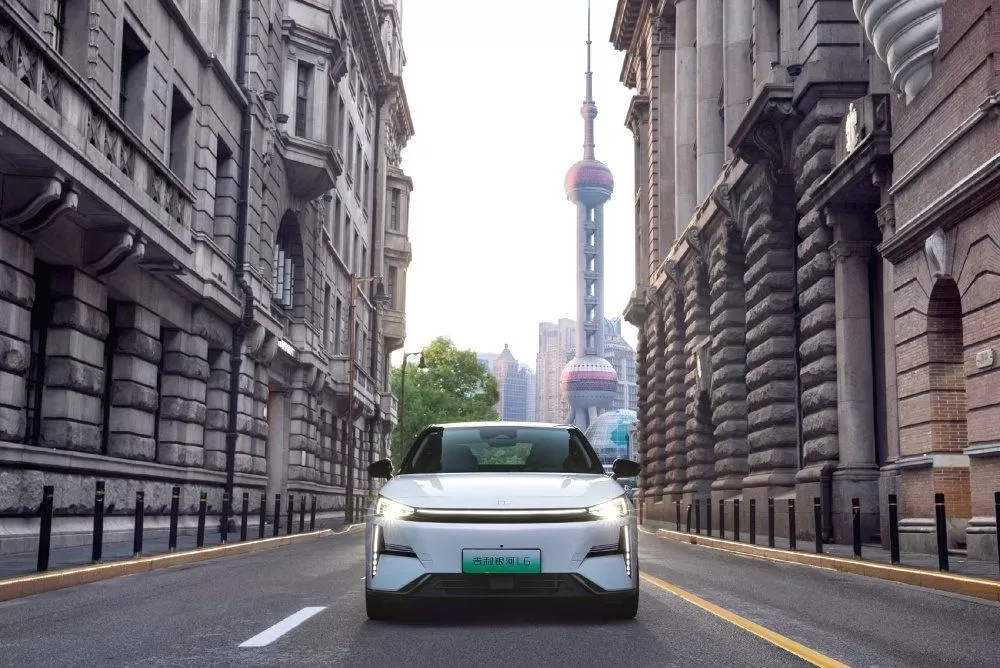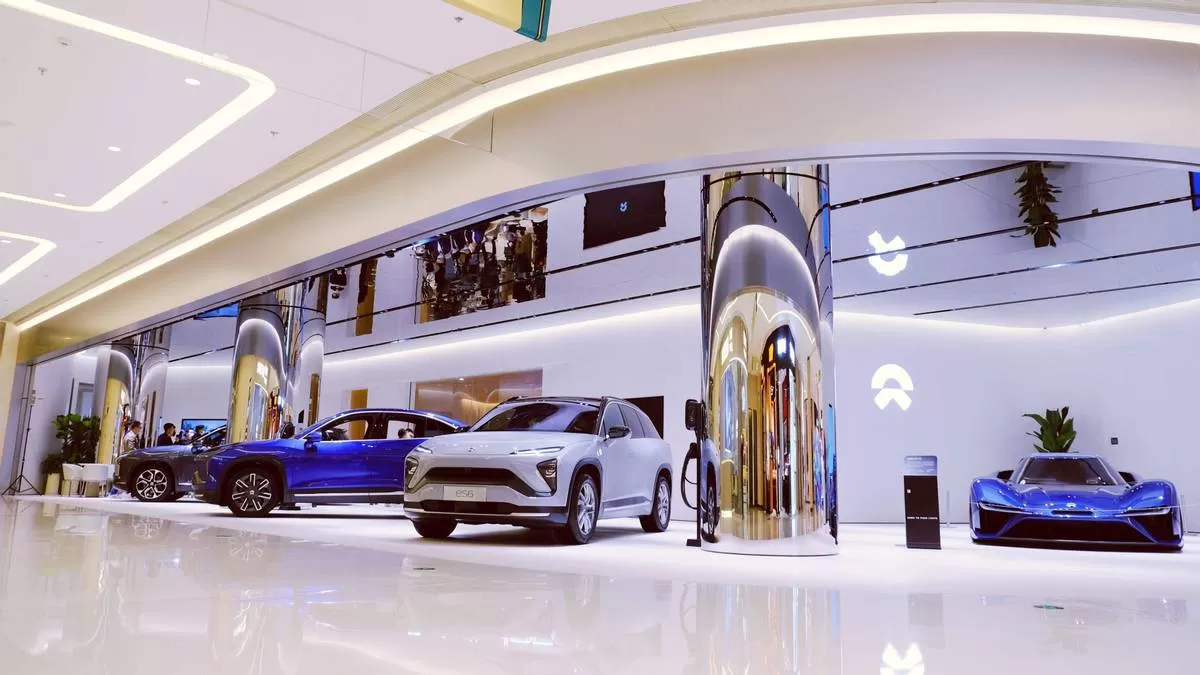As one of the recognized "Big Three" in the new energy vehicle (NEV) sector, NIO, Li Auto, and XPeng have experienced drastic changes in their fortunes. Some say that Li Auto, which has stuck to the extended-range hybrid route, has the most promising future. From the Li ONE to the Li L series, Li Xiang, the founder, has made substantial profits. Others are more optimistic about NIO and XPeng, believing that both extended-range and plug-in hybrids are transitional technologies, and that the ultimate form of NEVs will be pure electric vehicles, which have a brighter future.
Although fans of each brand argue vehemently, the leaders of these companies have their own internal scales to weigh the pros and cons. Even Li Auto, which has thrived on extended-range hybrids, chose to launch its first all-electric vehicle, the Li MEGA, with high expectations and strategic significance. However, the new car flopped upon its release. At the Beijing Auto Show, Li Xiang candidly admitted that selling pure electric vehicles is difficult, and selling high-end pure electric vehicles is even more challenging! In contrast, William Li (Li Bin) of NIO advised Li Xiang to consider battery swapping, noting that NIO is a pioneer in the "high-end pure electric + battery swapping" approach.
So, while the market for extended-range hybrids is booming, does NIO, which insists on a high-end pure electric route, still have a future? Industry insiders have revealed the truth, and it's enlightening! Have you noticed that since the beginning of this year, NIO seems to have hit a winning streak? The number of new orders has exploded weekly, consistently setting new records for the brand. Even well-known influencer Sun Shaojun has stated that NIO has solidified its position at the top. NIO's increasing popularity is the result of long-term perseverance. From an insider's perspective, NIO has done at least four things right.

Before diving into the reasons, let's take a look at NIO's current achievements and their significance. In May and June of this year, NIO's monthly sales exceeded 20.000 units for two consecutive months. In June alone, NIO delivered 21.209 new vehicles, a year-on-year increase of 98%, setting a new record. Additionally, in June, the average transaction price per vehicle for the NIO brand reached 287.000 yuan, surpassing both Zeekr and Tesla. In the second quarter of 2024. NIO delivered a total of 57.373 new vehicles, a year-on-year increase of 143.9%, far exceeding the target set earlier in the year. NIO's ES6 and EC6 models both exceeded 10.000 units in monthly sales for two consecutive months, firmly establishing their place in the top tier of the high-end mid-size SUV market.
It's an industry consensus that pure electric vehicles are difficult to sell, and high-end pure electric vehicles are even harder. So why is NIO able to continue leading in this niche market? Ultimately, it comes down to four key directions that NIO and William Li's team have consistently adhered to, which have also become criteria for many consumers when choosing high-end pure electric vehicles.

1. For High-End Pure Electric, Choose Vehicles with High Computing Power
The second half of the NEV game is all about "intelligence." Whether it's the car's infotainment system or intelligent driving assistance, everything relies on a powerful computing system. The level of computing power determines the upper limit of a vehicle's capabilities after future OTA updates. With the rise of urban intelligent driving, many models equipped with over 100 Tops or even 200 Tops of computing power will soon become outdated. Even models with over 500 Tops will hit a bottleneck within a year or two, leaving consumers at a disadvantage.
To avoid this issue, all NIO models come standard with four Nvidia Orin-X chips, providing 1016 Tops of computing power. This forward-thinking approach ensures sufficient computing power for the continuous intelligent iteration of all models over the next few years, offering the best and safest intelligent driving experience for users. NIO is currently the only brand that can maintain a three-year lead in computing power without becoming obsolete within five years. After upgrading to the 8295 car chip, the 2024 models integrate computing power for both intelligent driving and intelligent cabins, giving NIO a significant advantage over other brands.

2. For High-End Pure Electric, Choose Vehicles with Battery Swapping Capability
NIO’s energy replenishment system, which includes battery swapping, charging, and upgrading, is another key differentiator from other pure electric brands. NIO owners don’t have to worry about energy replenishment or battery degradation. The brand offers a comprehensive and complete energy solution. As of July 2 this year, NIO had deployed 2.439 battery swap stations across China. For daily commutes, users can use the standard battery pack, and for long-distance travel, they can upgrade to a larger battery pack. This flexibility avoids the need to carry a large battery all the time, reducing energy consumption and making the car more affordable by separating the car and battery costs. Battery swapping takes just three minutes, allowing users to hit the road fully charged without waiting in line, offering efficiency comparable to refueling a gasoline car. Additionally, all NIO models support traditional charging methods.
3. For High-End Pure Electric, Choose Vehicles with Competitive Technology
Rather than focusing solely on low prices, NIO emphasizes product value, with core technologies being the most direct reflection of this value. NIO has laid out 12 full-stack technologies for intelligent electric vehicles, which are essential capabilities for any company aiming for global operations. NIO’s full-stack technology lineup includes chips and in-car intelligent hardware, battery systems, electric drive and high-voltage systems, vehicle engineering, a full-vehicle operating system, panoramic connectivity, intelligent driving, intelligent cabins, smart energy, intelligent manufacturing, artificial intelligence, and global digital operations. This allows NIO to meet the research and development needs of the brand across three dimensions—intelligence, electrification, and automotive products and services—and to stay ahead of the competition.
4. For High-End Pure Electric, Choose Vehicles with a Focus on Full Lifecycle Quality
NIO has always prioritized user interests, creating a full lifecycle quality system known as "ATQ." This system is based on lifecycle management, digital intelligence, and rapid iterative feedback loops. By taking the product’s entire lifecycle as the manufacturing backbone and implementing a series of strategic and systematic quality management activities, NIO has established a collaborative, mutually beneficial relationship with users and partners. This ensures that every stage of product development, design, R&D, manufacturing, and usage is fully controlled and continually improved, ultimately maximizing user satisfaction and setting a global quality benchmark.

Thanks to this comprehensive quality system, NIO has won numerous industry awards. On June 6. J.D. Power released its 2024 China NEV New Car Quality Study, where the NIO ES8 ranked first in the luxury pure electric vehicle market, and the NIO ET5/ET5T ranked first in the mid-size pure electric car market. Since 2019. NIO models have consecutively won quality awards from this organization for six years, consistently proving to be stable and reliable, never disappointing users. The "Jalan Road 2024 H1 NEV Brand Health Research" report also showed that NIO was the most favored NEV brand, ranking first.
In summary, NIO's position in the high-end pure electric market is well-deserved. The automotive industry is always about the long game—those who laugh last, laugh best. NIO, with its commitment to "high-end pure electric + battery swapping," has started to bear fruit. This is the inevitable result of the brand's long-term persistence. If NIO continues on this steady upward trajectory, not only does it have a future, but its future looks incredibly promising!






